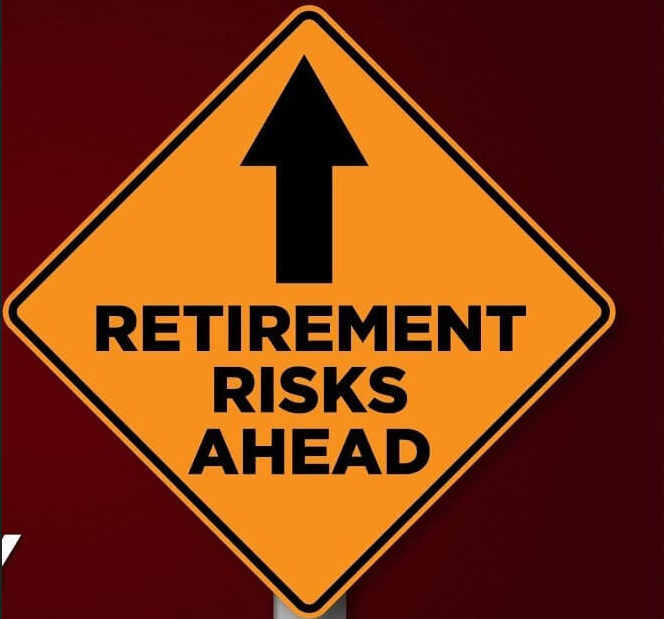The seven deadliest words in the English language—We’ve never done it this way before. And that certainly applies to Baby Boomers whose prospects for retirement are different than any preceding generation. Many Boomers, those born between 1946 and 1964, have made their retirement plans based on their parent’s generation. The World War II crowd retired with income from Social Security and, in most cases, a generous pension, providing non-stop income that lasted the remainder of their lifetimes. With that income, mom and dad didn’t need to tap their financial assets as often in order to cover their spending, therefore, the money lasted longer. But Boomers seldom have access to pensions these days, and a new study from the Center for Retirement Research at Boston
Topics:
Bob Williams considers the following as important: 5.) Alhambra Investments, Featured, Financial Planning, newsletter, retirement income
This could be interesting, too:
Nachrichten Ticker - www.finanzen.ch writes Die Performance der Kryptowährungen in KW 9: Das hat sich bei Bitcoin, Ether & Co. getan
Nachrichten Ticker - www.finanzen.ch writes Wer verbirgt sich hinter der Ethereum-Technologie?
Martin Hartmann writes Eine Analyse nach den Lehren von Milton Friedman
Marc Chandler writes March 2025 Monthly
The seven deadliest words in the English language—We’ve never done it this way before. And that certainly applies to Baby Boomers whose prospects for retirement are different than any preceding generation.
Many Boomers, those born between 1946 and 1964, have made their retirement plans based on their parent’s generation. The World War II crowd retired with income from Social Security and, in most cases, a generous pension, providing non-stop income that lasted the remainder of their lifetimes. With that income, mom and dad didn’t need to tap their financial assets as often in order to cover their spending, therefore, the money lasted longer.
But Boomers seldom have access to pensions these days, and a new study from the Center for Retirement Research at Boston College found that a lack of pensions may be causing Boomers to draw down their retirement money faster than previous generations.
The CRR used data from the University of Michigan’s Health and Retirement Study, which shows that the more annuitized income a retiree has, the slower they draw down their assets. But the opportunities for annuitized income are substantially fewer for Boomers and the generations that follow them. The culprit? Employer 401(k) savings plans.
401(k) History
Despite their popularity today, 401(k) plans were created almost by accident. It started when Congress passed the Revenue Act of 1978, which included a provision added to Section 401(k) of the Internal Revenue Code allowing employees to avoid taxation of deferred compensation.
In 1980, benefits consultant Ted Benna referred to Section 401(k) while researching ways to design more tax-friendly retirement programs for a client. He came up with the idea to allow employees to save pre-tax money in a retirement plan while receiving an employer match. His client rejected the idea, so Benna’s own company, The Johnson Companies, became the first company to provide a 401(k) plan to its workers.
In 1981, the IRS issued new rules allowing employees to fund their 401(k) through payroll deductions, and that kickstarted the popularity of 401(k)s. Within two years, nearly half of all big companies were offering 401(k)s or were considering it, according to the Employee Benefits Research Institute.
Companies loved it. Even after making an employee matching contribution, the 401(k), a defined contribution plan, was much cheaper and less complicated than the defined benefit (DB) plans that had been the standard before 1981. DB plans, like buffalo in the 19th century, sauntered off toward near extinction.
Employees loved the 401(k). They could put in their own money, before taxes, and the company was giving them money on top of that. But as it turned out, a 401(k) doesn’t provide the same secure future the guaranteed lifetime income of a pension plan did. Why? No one anticipated how much longer Americans would live. In 1981 when the IRS issued the new rules for 401(k) plans, the average life expectancy was 74.01 years. Today, more people are living well into their 90’s. That’s a lot of extra living and a lot of extra money required to cover those extra years.
The Center for Retirement Research study found that retirees with $200,000 in starting wealth and access to a DB plan have $28,000 more in assets by age 70 than their counterparts. By age 75 and by age 80, the household with a DB plan has $86,000 more wealth.
The researchers concluded that baby boomers who base their retirement forecasts on the drawdown speeds of past generations will most likely underestimate how quickly they’ll go through their own retirement savings.
Adjusting Your Social Security Attitude
The only thing that comes close to a pension for many people is Social Security. Like a pension, it provides guaranteed income for the rest of your life. Over the past couple of decades, the prevailing attitude has been to take Social Security as soon as you’re eligible at age 62. But taking it early means you’ll receive a reduced benefit for the rest of your life.
To maximize your Social Security:
- Work at least 35 years. Social Security bases your benefit on your highest 35 years of earnings.
- Wait to begin taking Social Security until your Full Retirement Age (FRA). For most people these days, that’s between 66-67. Full Retirement Age is when you receive your fill Social Security benefit.
- Wait until age 70 to begin taking Social Security. For every year you wait between your FRA and 70, your benefit will increase by 8% per year. You’re rewarded with delayed credits for waiting past Full Retirement Age to receive your benefit. The delayed credits stop at age 70, so there’s no reason to wait past that.
- Continue working past age 70 if you can make enough money. If you earn more in a year after age 70 than you did in one of your lower-earning 35 years, then it replaces one of the lower-earning years in the Social Security calculation and your benefit will be bigger.
Careful Planning
Social Security isn’t the only thing to consider in your retirement planning. You also have to decide how much you can withdraw each year from your assets.
For years, pre-retirees were told that the best withdrawal plan is to take 4% from your savings during the first year of retirement and then adjust that amount for inflation every year after that and your money should last longer than your do.
BUT… that plan doesn’t take into account the Sequence of Returns Risk. In other words, the risk of withdrawing money from a smaller pool of money than you thought you had.
If there’s a major downturn in the market the first year you retire, the value of your portfolio could drop substantially and you’d be taking out the same amount of money you need to live on from a smaller portfolio. That would eat up your retirement funds much faster than you expected. Advanced, careful planning and considering ALL the facts and details, is key to your success and survival.
For decades we’ve heard the advice from First Officer Spock on the Starship Enterprise to “Live long and prosper.” Today he might say, “Live long—and keep working.”
Tags: Featured,Financial Planning,newsletter,retirement income








